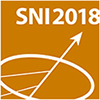Speaker
Description
The Helmholtz-Zentrum Berlin (HZB) operates three beamlines for macromolecular crystallography (MX) at the electron storage ring BESSY II [1,2]. BL14.1 and BL14.2 are tunable in the photon energy range from 5 to 16 keV, while BL14.3 is a fixed-energy side station (13.8 keV). They feature state-of-the-art experimental stations and ancillary facilities, serving more than 100 research groups across Europe. More than 2500 protein structures measured at BESSY II have resulted in protein data base (PDB) depositions so far, and with more than 600 PDB depositions in 2016, they are currently among the five most productive MX-stations in the world.
The experimental endstation of BL14.1 provides high degree of automation and is equipped with a Pilatus 6M detector, a CATS sample changer robot and an MD2 multi-axis goniometer. Recently BL14.2 underwent a comprehensive upgrade to increase the performance in terms of sample throughput, allowing for large automated fragment-screening campaigns in the near future. It features a Pilatus3S 2M detector, a G-Rob sample changer and a piezo-controlled nanodiffractometer. Its sample dewar can accommodate up to 294 samples, supporting both, SPINE- and UNIPUCK standards.
All standard data collection procedures, such as SAD and MAD, are possible, as well as long-wavelength measurements and element identification using an X-ray fluorescence detector. Further experimental possibilities are radiation induced phasing experiments using a pulsed UV-laser and in situ crystal screening, supporting several types of 96-well plates. An HC-Lab dehydration device allows for controlled crystal dehydration, and in combination with a rapid nozzle exchanger a cryojet can be used to freeze samples in a defined hydration state within a fraction of a second [3]. Furthermore, the HZB-MX group operates an S1 BioLab which supports the complete workflow from protein purification to crystallization.
[1] U. Mueller et al. (2012), J. Synch. Rad. 19, 442
[2] U. Mueller et al. (2015), Eur. Phys. J. Plus 130, 141
[3] M. W. Bowler et al. (2015), Cryst. Growth Des. 15, 1043

